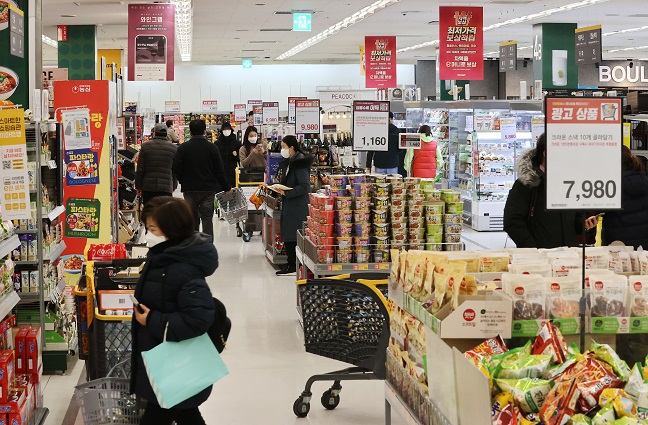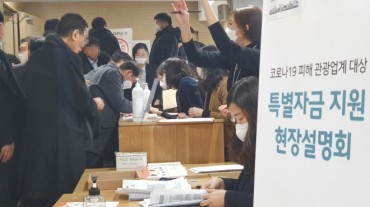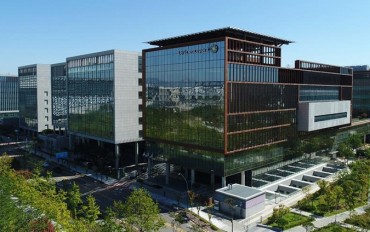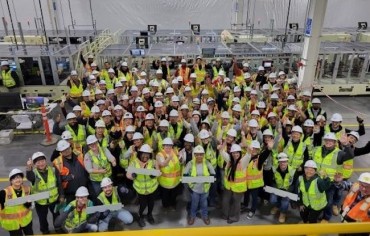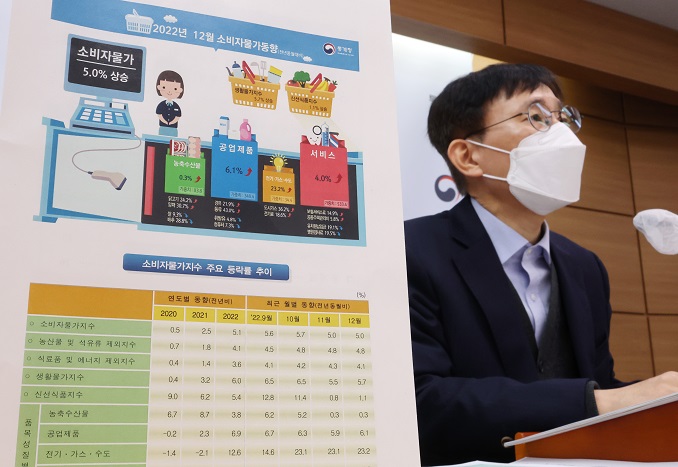
Eo Woon-seon, a senior official at Statistics Korea, holds a press conference at the government complex in Sejong, central South Korea, on Dec. 30, 2022, to announce South Korea’s consumer prices grew at the fastest pace in more than two decades in 2022. (Yonhap)
SEOUL, Dec. 30 (Korea Bizwire) — South Korea’s consumer prices grew at the fastest pace in more than two decades in 2022, government data showed Friday, as the country felt the pinch of soaring prices of raw materials and energy sources following the Russia-Ukraine war.
Consumer prices rose 5.1 percent on-year in 2022, accelerating from a 2.5 percent gain in 2021, according to the data compiled by Statistics Korea.
It marked the steepest on-year rise since 1998, when consumer inflation spiked 7.5 percent in the wake of the Asian financial crisis.
The 2022 reading came in line with the government’s previous estimate.
South Korea has been grappling with inflation following a sharp rise in energy and raw material prices amid the Russia-Ukraine war.
The price of utility services gained 12.6 percent on-year in 2022, as South Korea, which depends heavily on imports for its energy needs, was hit by soaring global prices of key resources.
It marked a drastic turnaround from a 2.1 percent on-year decline posted in 2021.
The price of agricultural, fisheries and livestock products increased 3.8 percent in 2022, slowing from an 8.7 percent spike tallied a year earlier.
Industrial product prices, however, increased 6.9 percent on-year in 2022, with those of oil and processed foodstuffs rising 22.2 percent and 7.8 percent, respectively, the data also showed.
Prices of services increased 3.7 percent this year, compared with a 2 percent growth posted in 2021. The rise was led by higher insurance fees, rents, and dining-out costs.
Core inflation, which excludes volatile agricultural products and oil prices, rose 4.1 percent in 2022, rising sharply from 1.8 percent growth tallied last year.
Prices of daily necessities — 144 items closely related to people’s everyday lives, such as food, clothing, and housing — jumped 6 percent on-year in 2022.
In December, consumer prices grew 5 percent from a year earlier. Inflation rose more than 5 percent for the eighth month in a row.
Consumer prices earlier increased at the fastest pace in almost 24 years at 6.3 percent in July.
The figure stayed above 2 percent — the central bank’s inflation target over the medium term — for the 21st straight month in November.
As for December, the prices of agricultural, fisheries, and livestock products edged up 0.3 percent on-year. Those of industrial products advanced 6.1 percent, higher than the previous month’s 5.9 percent increase.
Those of electricity, gas and water, meanwhile, shot up 23.2 percent. Prices of services advanced 4 percent, lower than a 4.1 percent on-year rise posted in November.
“While the rise in prices of industrial goods such as processed foodstuffs and petroleum has accelerated, that of personal services, such as dining-out, has slowed, leading to the same overall increase as the previous month,” Eo Woon-sun, a senior Statistics Korea official, told reporters.
The Bank of Korea (BOK) said that the December inflation figure was within its prediction made in November, adding that price growth will likely stay at around 5 percent until early next year.
To tame inflation, the BOK has hiked its benchmark interest rate by a combined 2.75 percentage points since August last year. The current rate stands at 3.25 percent.
The finance ministry earlier estimated next year’s inflation at 3.5 percent.
“Through the first half (of 2022), the sharp rise in global energy and grain prices led to an overall hike in prices here, led by oil and foodstuffs. In the second half, the growth has slowed on stabilized prices of agricultural, fishery and oil products,” the finance ministry said in a separate statement.
“In December, the recent slowdown in inflation continued despite the rise in prices of processed foodstuffs, following a decline in the global prices of oil and the eased inflationary pressure in the service sector,” it added.
The ministry, however, said the country should continue to stay vigilant down the road, and closely monitor the adjustment of prices at the beginning of the new year, as well as the demand in items related to the Lunar New Year that falls in January.
(Yonhap)


